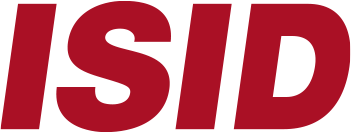Media monitoring is a method of scanning public or private communication channels, such as television channels, radio, print publications, and the Internet, for mentions of specific keywords. The idea behind all this is to get an idea of the popularity of said keywords, in what contexts they are used and how often. Later we will see why. But first let’s take a brief look at the history of Media Monitoring to understand where it came from.
Media monitoring may seem like a recent discovery, now that we live in the information age, but it’s actually almost 200 years old. The first news clipping services appeared in the 18th century. Mainly used by companies at the time, their main objective was to read all the printed publications that fell into their hands, looking for specific keywords in which the client was interested.
With the advent of the Internet and other new technologies, monitoring of the media has become more complex and easier at the same time. The reason for the increase in difficulty is the explosion of television channels in the 90s and the exponential growth of content on the Internet. Now it was easier than ever to find information in a jiffy, but there was so much of it that it was completely unfathomable. Media Monitoring companies now needed their own spiders to roam the Web to find the information they needed, from the sites that each client was interested in, such as news sources, online newspapers, magazines, and the like.
How to monitor video?
Today, more than 70% of the data on the Internet is video. But the problem with video is that it falls into the category of unstructured data, just like audio (such as podcasts, for example). This means that the video cannot be easily analyzed to extract information from it. Because that’s another story. Hence, another of the tools that is having a great impact for the Media Monitoring business are the AI systems capable of analyzing the video, transcribing the audio, recognizing faces or objects that appear in the video and writing all this in a file of metadata text, which can be parsed by conventional means, like the rest of the text.


The purposes of media monitoring
What is the point of using media monitoring? For private companies, it can be useful to know how a certain product is being received, or how the latest scandal is spreading. But it can also be used to see how competitors are doing. For press agencies it is very useful to see how a certain campaign is working and how much coverage they are getting on certain issues. And television channels or production companies have their own needs.
IDENTIFY MENTIONS: Companies, organizations and even the public sector use media monitoring as a tool to identify mentions of their name, brand, product, service or executives or representatives. This is especially important in political campaigns or product launches.
CONTROL COMPETITORS: The private sector often tries to find out how competitors are doing, both in their successes and in their problems, in order to react accordingly or to compare their own results with those of those competitors.
MONITOR THE REPUTATION: A brand’s reputation is crucial for several reasons. It helps to understand how the communication department is doing, if its message is clear and accurate. It also helps to detect potential problems (for example, with unhappy customers), before they become a real one.
What information does media monitoring provide?
As with all complex data sets, the results are always only as good as the questions we are able to ask. This is one of the reasons data scientists are becoming increasingly popular in the field of media monitoring, because they can offer you insight you might not have thought of. However, most commercial programs offer you a series of tables and graphs to illustrate the results, in order to make them more understandable, regardless of the company profile that is consulting them (technical or business). These are some examples:
- Geographic information and distribution of mentions
- Frequency of mentions
- Time distribution of mentions
- Mention heatmaps
In conclusion, media monitoring is a process that allows you to track public or private communication channels, such as television channels, radio, print publications, and the Internet, and obtain information about the use of specific keywords to help companies, organizations, Videoma Monitor is an ideal solution.
